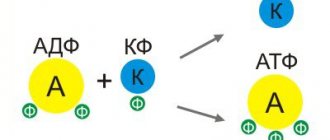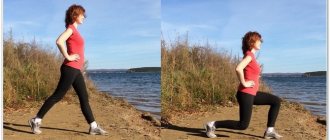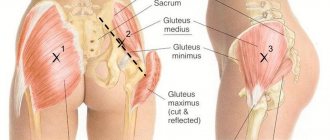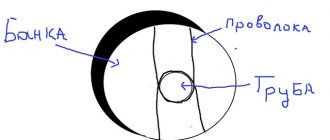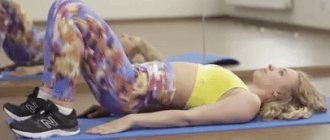Today, kickboxing is especially popular because of the simplicity of its technique, and everything ingenious, as we know, is simple. Over all the accumulated experience, very useful exercises for kickboxing have been formed.
The martial arts kickboxing was formed in the 60s and is divided into two branches - Japanese and American. The main difference from Thai boxing is the ban on elbow strikes, which lead to great injury to athletes. The main advantages of kickboxing are development:
- Strengths – exercises to increase general physical fitness;
- Endurance (both emotional and physical) – long-distance running, active work in sparring;
- Coordination, thanks to practicing avoidance of blows;
- Motor skills, by practicing combinations and moving around the ring;
- Flexibility. Flexibility develops especially well when kicking.
Stretching exercises at home
You can do kickboxing exercises at home for beginners. Exercise for coordination and explosive strength of the leg muscles. Place your feet shoulder-width apart, then extend your right leg, moving it behind the left (imitation of a kick, for correct execution, from the very beginning, bring the knee forward, then the rest of the leg). After this, the legs are bent at the knees and a jump is made, during which the position of the legs changes to the opposite. At first, the task is performed according to how you feel. Don't overload yourself, but at the same time avoid laziness.
There are also no restrictions in kickboxing classes at home for beginners; these exercises are very simple, but at the same time they can significantly improve stretching for performing beautiful high kicks with knees.
Stretching tasks help reduce the risk of injury during training, and it is also useful to do this at the end of the workout, when the body is as warm as possible. Sit on the floor and spread your legs as wide as possible and then stretch your entire body alternately to the left, right and center. It is advisable to stay in each position for 30 seconds. In this case, it is better to bend your feet upward, towards the ceiling. Then, remaining in the same position (you can bring your legs together a little), turn your body towards the floor in both directions, it is important to touch the floor with your chest. Then roll over onto your stomach, stretch your arms in different directions, but not up, but at your sides. Now try to reach your left hand with your right toe and vice versa. Left toe to right hand.
Recommendations for training triceps
A few basic recommendations for performing triceps exercises:
- Choose the right working weight and determine the range of repetitions. For massive triceps, combine both strength work (8-12 reps) and pumping (15-20 reps) in your training schedule. But remember that the exercise will not be effective if you do not feel the muscles working. You should feel your triceps contracting and stretching with each repetition.
- Gradually increase the weight of the additional weight when doing dips. This is one of the most traumatic exercises for the elbow joints. It is better to place this exercise closer to the final part of the workout and work with a relatively light weight.
- When performing French presses, it is fundamentally important to concentrate on stretching the triceps during the negative phase of the movement (during the descent). It should be 2 or even 3 times longer than the upward movement of the projectile. The whole benefit of this exercise lies precisely in this. In other movements you will not be able to stretch the medial head as much. Although the emphasis should be on the negative phase in all exercises for this muscle group.
- Minimize cheating (swinging of the body) when performing arm extensions on the upper block. Rocking deprives this exercise of any meaning and removes all the stress from the triceps brachii muscle.
- Use all available ways to increase the intensity of your training. The triceps are a relatively small muscle group: if you want to see noticeable progress, you need to hit it hard. Doing partial reps after reaching failure, asking a partner to help you do a couple extra reps, finishing off with light weights after each heavy set are all great for the triceps. But don't overdo it. This muscle also works actively during chest and deltoids training. Doing too many triceps exercises can ultimately lead to overtraining and lack of growth.
- Make the most of your rest time between sets by stretching your triceps. The more flexible your muscles are, the more comfortable you will be in performing exercises through a full range of motion. It will also improve pumping and neuromuscular communication, stretch the fascia and reduce the likelihood of injury.
- Experiment with your split program. Triceps can be trained together with the chest, back, shoulders or biceps. Choose the option that suits you best, or alternate variations monthly.
- Breaks between approaches should not exceed 1-1.5 minutes. This way, the flow of blood into the working muscles will be maximum, and the muscles will not have time to cool down after intense exercise. Perhaps the only exception is the heavy close-grip bench press, where more rest is allowed for recovery.
- If you train your arms on a separate day, work in supersets - work your triceps first, and then move on to your biceps. The triceps is a larger, stronger muscle that requires more heavy loads to grow. Therefore, it is advisable to first load it while you are full of energy. In addition, while you do the biceps, the triceps will rest, which can reduce your rest time.
Strength development
Strength exercises for kickboxing include training with iron and on machines, as well as working with your own weight. First of all, let's start with the classics:
- Bench press in a lying position on a horizontal bench. When working with a medium grip, the load goes to the front shoulder muscles, chest muscles and triceps (necessary for a hard blow). Working with a wide grip loads the chest muscles to a greater extent, while working with a narrow grip loads the internal bundles of the pectoral muscles;
- Throwing the bar forward from the chest. Feet should be placed shoulder-width apart, for greater stability, raise the empty bar to chin level and sharply, jerkily throw (without letting go) from the chest, simulating a blow. It makes sense to do the exercise in three approaches, each with 15 jerks. By regularly performing the task, you will notice the force of the blow and the developed shoulder joint;
- Rope training. Many modern gyms do not have a high ceiling, thereby depriving them of the excellent opportunity to climb a rope without using their legs and thus pumping up their shoulders. Even in this case, there is a way out - secure the middle of the rope, grab both ends and perform undulating sharp movements;
- Core strengthening challenge. To do this you will need a sports weight. Place it on the floor, your feet should be shoulder-width apart, grab the handle (left hand palm up, right hand palm down) keeping your back straight and perform movements towards the hand with your palm facing up. The weight is lifted behind the head and transferred to the second hand. Circular movements are performed first in one direction (several times in one approach), then in the other.
Kickboxing exercises in the gym differ only in that they require, as in the examples above, iron, exercise equipment, etc. Squats with a bar on your shoulders are great for loading your leg muscles. It is better to do the first warm-up approaches with an empty bar, then add weight. The legs are shoulder-width apart, the back is straight. You also need a special stand, adjusted at the level of your shoulders, and a partner who will control the entire process. If you have a heavier weight, you can take a footrest, stand on it so that the weight is at the bottom between your legs and then, holding it in relaxed hands, do squats and jerks up, raising the weight to chin level. This exercise strengthens the muscles of the legs, back and shoulders and is an excellent replacement for deadlifts, which require a bar. In turn, the technique for performing deadlifts is identical. The only difference is that a footrest is not needed, and the hands only hold the bar and raising it to chin level is not required.
Progression of loads
We figured out what exercises pump the triceps. However, no set of exercises will give the desired result if you do not improve your performance at each workout.
There are several ways to do this:
- Increasing working weights. The method is fundamentally important for basic exercises, but for isolation it is advisable to gradually increase the weight used - of course, without compromising technique. This is done like this: you did 3 sets of bench press with a narrow grip with a weight of 80 kg for 10 repetitions. For your next workout, try lifting a weight of 82.5 kg. Most likely, you won’t be able to do 10 reps in all sets, but it will come out to about 10-8-6. Continue with this weight until you can do 10-10-10. After this, increase the working weight by another 2.5 kg.
- Increasing the number of repetitions. Let's say you were able to do 3 sets of strict barbell French presses for 12 reps. Weight does not play a role in this case. In your next workout, try to do 13 repetitions without compromising your technique or increasing the rest time between sets. Next time - 14, then - 15. After that, slightly increase the weight of the barbell, drop again to 12 repetitions and repeat all over again.
- Increasing the number of approaches. When you can easily complete 3 sets of any triceps exercise, do another set. The number of repetitions and rest time remain the same. Increasing your training volume (within reasonable limits) is a powerful stimulus for growth.
- Adding new exercises . This technique is only suitable for experienced athletes. If you feel that three or four exercises are no longer enough to properly pump up your triceps, add one more exercise to your program. Start with light isolation, and if this is not enough, complete the arm workout with a French bench press with a barbell or dips with additional weight. Painful sensations are guaranteed the next day.
- Reducing rest time between sets. It will be difficult at first, but with experience your muscles will become more resilient: you will not lose productivity using minimal rest time. The blood supply to the muscles will be much stronger.
- Increasing the number of workouts. This option will help athletes whose arm muscles stubbornly refuse to grow. There are many reasons for stagnation, but in most cases, more frequent and intense training successfully solves the problem. Train your triceps twice a week: the first time with your chest, the second time with your biceps. You can do lighter workouts in supersets to achieve maximum pump. This should help you build up your arms.
What suits girls
Physical exercises for kickboxing can be done in the CrossFit style. To begin with, it will be useful to practice on the horizontal bar, uneven bars, with tires and ordinary weights weighing up to 10 kg. Kickboxing exercises for girls at home are perfect:
- classic push-ups with three grips (wide, narrow, medium);
- push-ups from behind the back (to load the triceps);
- plank (the same position as during push-ups, only you need to stand on your elbows and hold in this position for as long as possible);
- squats with jumps;
- pistol (stand on one leg bent at a right angle);
- burpee - throw your legs back, taking a push-up position, then bend your legs under you (squat position) and jump up;
- handstand push-ups (lean against the wall for convenience).
Kickboxing involves exercises and training. Do not neglect training your reaction speed, practicing punches on the bag and sparring, and to avoid soreness, regularly visit the sauna.
Automatic skill theory
The best way to fight better is to develop your skills into automatic reflexes. Developing automatic boxing skills is the only way to take your skill to the next level. One boxer can have 10 skills, but if none of the skills are brought to automaticity, the boxer will switch his focus from one to another... which means that the fighter will perform each action with a delay - miss punches without having time to dodge or block or miss the best moments to attack. If all of your opponent’s skills are practiced and brought to automaticity, he will have skills with which he can threaten you constantly and at any moment of the battle.
Getting started with the 8 fit app
After installing the application, you need to go through 7 steps to fill out your profile:
- Specify gender
- Outline the main goal (Weight loss, become slimmer, gain muscle mass). Additionally, the application will ask you to describe why you chose a particular goal.
- Indicate your age
- Height
- Weight
- Note your fat percentage
- Select the fat value you want to achieve
Next, the application will ask you to choose in what proportions you will combine proper nutrition and exercise for weight loss. On the easy level, you work out twice a week for two months and follow an occasional meal plan. At the 1.5 month average, you will exercise 4 times a week and follow dietary recommendations frequently. And hardcore fans can choose a difficult regime: 1 month, 5 days of training a week, constantly following a nutrition plan.
How to train and develop automatic boxing skills
Developing automatic boxing skills from learned techniques into automatic reflexes takes quite a long time and requires effort and patience. Simple exercises for working on the paws to develop automatic skills are presented below:
Chase and throw the jab
The coach’s task is to raise his right or left hand only for a second, and then lower it. The boxer's job is to follow his trainer as he moves around the ring; as soon as his paw appears, the boxer must immediately throw the jab. This exercise helps develop reaction reflexes so that the boxer is always ready to throw a jab while moving around the ring, keeping the correct distance from his trainer.
Two, Dive Under Counter-Left Hook
The trainer should place his paws under the deuces while the boxer follows him around the ring. The trainer should then try to catch the boxer off guard by trying to land a counter left hook to the boxer's head after the boxer has thrown a deuce. When the boxer sees this, he must dive under the left hook.
